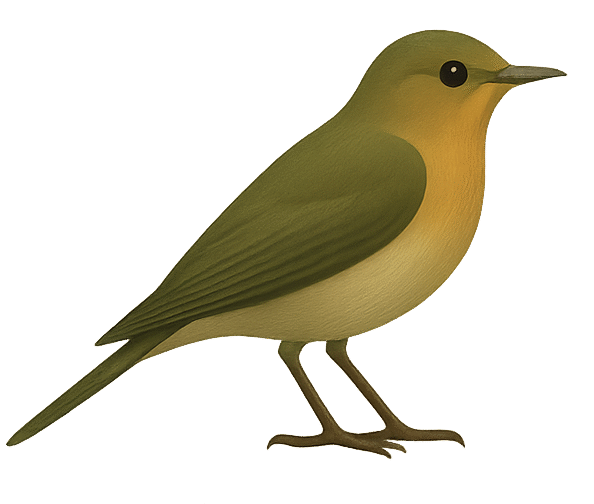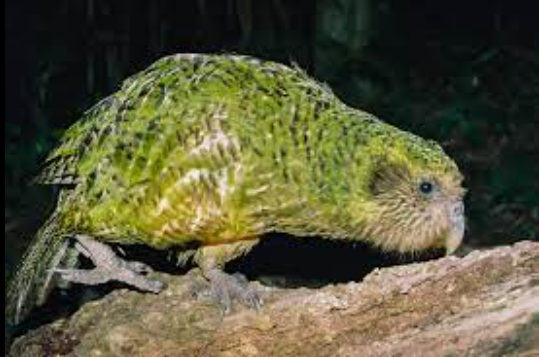Vogelkop Superb Bird-of-Paradise: Nature’s Mesmerizing Performer
If there’s one bird that truly lives up to the phrase “nature’s performer,” it’s the Vogelkop Superb Bird-of-paradise. Found exclusively in Indonesia’s secluded Bird’s Head Peninsula forests, this remarkable species has gained worldwide fame for its captivating courtship dance and striking plumage changes.
Unlike many other birds, the Vogelkop Superb doesn’t rely on its colors alone. Instead, it creates an optical illusion—turning its body into a jet-black oval frame with bright electric-blue eyes and chest shield. Add in its rhythmic dance, and you’ll understand why it went viral when scientists first recorded it in 2018.
But beyond its viral fame, this bird represents so much more: an example of evolutionary artistry, sexual selection, and biodiversity conservation. In this article, we’ll explore everything about this remarkable bird—from its classification and physical traits to its diet, behavior, conservation status, and fascinating cultural significance.
Taxonomy / Classification
Before looking at how the Vogelkop Superb Bird-of-paradise lives and behaves, we should first see where it fits within the family of birds.
Also read: /the-wilsons-bird-of-paradise/
- Common Name: Vogelkop Superb Bird-of-paradise
- Scientific Name: Lophorina niedda
- Family: Paradisaeidae (Birds-of-paradise family)
- Order: Passeriformes (Perching birds)
- Class: Aves
The Vogelkop was once thought to be the same species as the Superb Bird-of-paradise (Lophorina superba), but closer study revealed significant differences in appearance, song, and dance. In 2018, it was officially classified as a distinct species, emphasizing the incredible biodiversity of New Guinea.
Physical Description
At first glance, the Vogelkop Superb Bird-of-paradise may look like a small, unassuming black bird. But appearances are deceptive.
- Size: About 26 centimeters (10 inches) in length.
- Coloration:
- Male birds are mostly black with soft, velvety feathers that soak up almost all light, making them look like a “black hole.” Their most striking features are the iridescent turquoise-blue chest shield and bright blue eyes, which shine against the dark plumage.
- The female birds are brown with striped feathers, which helps them blend in with the forest. This stark difference is an example of sexual dimorphism, common in birds-of-paradise.
- Unique Traits:
- Males have elongated feathers on their head and sides that can flip forward during displays.
- When courting, these feathers form an oval cape around the body, transforming the bird into a surreal dancing figure unlike anything else in nature.
This visual trick is what makes the Vogelkop Superb famous worldwide—few animals can change their shape so dramatically.

Habitat and Range
The Vogelkop Superb Bird-of-paradise is an endemic species, which means it can only be found in one particular part of the world.
- This species is located on the Bird’s Head Peninsula, also known as Vogelkop, in the northwestern part of New Guinea, Indonesia.
- Environment:
- Prefers montane and hill forests between 1,200–2,000 meters in elevation.
- These forests provide dense vegetation, ideal for hiding nests and performing courtship displays.
- Range: Extremely limited—found only in this peninsula, which makes it vulnerable to habitat changes.
- Migration: This bird is non-migratory and stays within its forest home year-round.
Because of its limited distribution, the Vogelkop Superb is both a treasure and a conservation priority.
Diet and Feeding Habits
Similar to other birds-of-paradise, the Vogelkop Superb’s diet is varied and depends on its forest habitat.
- Primary Foods:
- Fruits and berries form the bulk of its diet, especially figs and other soft fruits.
- Insects such as beetles, grasshoppers, and caterpillars supplement its diet, providing protein.
- Foraging Behavior:
- Feeds mostly in the canopy and mid-level branches.
- Uses its slender beak to pick fruits and probe bark or leaves for insects.
- Ecological Role:
- Plays a critical role in seed dispersal, helping maintain forest diversity.
The bird’s high-energy dances and intricate courtship displays are powered by its diet, which consists mainly of fruit.
Behavior and Lifestyle
The Vogelkop Superb Bird-of-paradise is known as much for its behavior as its appearance.
Social Structure
- Males are solitary and spend much of their time preparing display sites—small clearings on the forest floor.
- Females are more secretive, focusing on nesting and raising young.
Vocalizations
- Males produce a series of sharp, metallic calls to attract females. These calls are distinctive and were one of the reasons scientists recognized the Vogelkop as a separate species.
Courtship Dance
This is the highlight of the bird’s lifestyle:
- The male clears a stage-like patch of ground.
- He calls to attract a female.
- When she arrives, he transforms—flaring his cape feathers into an oval and bouncing side-to-side.
- His iridescent chest glows blue, and his eyes flash against the black backdrop.
The female judges the performance, and only the most skillful males earn the chance to mate.
This dance is a classic example of sexual selection, where females choose mates based on their displays rather than brute strength.

Reproduction and Lifespan
Breeding Season
This happens in the dry season when there’s plenty of food available.
Nesting
- Females build nests alone, usually cup-shaped structures hidden in dense foliage.
- The nest is made from twigs, leaves, and moss for camouflage.
Eggs
- Clutch size: Typically 1–2 eggs.
- Egg color: Pale cream or light brown, speckled for camouflage.
- Incubation: About 16–18 days, done solely by the female.
Lifespan
- In the wild: Around 5–8 years.
- In captivity: Rarely kept due to habitat specialization.
The female’s independence in raising chicks highlights the importance of her camouflaged plumage, which protects her from predators while incubating.
Predators and Threats
Despite its beauty, the Vogelkop Superb faces natural and human-induced challenges.
Natural Predators
- Raptors such as hawks and eagles.
- Tree-climbing snakes.
- Large arboreal mammals that may raid nests.
Environmental Threats
- Deforestation: Logging and agricultural expansion threaten the montane forests of New Guinea.
- Climate Change: Altered rainfall patterns may disrupt fruit availability.
Human Impact
- While not hunted extensively, its limited range makes it sensitive to even small-scale habitat disturbances.
Conservation Status
- IUCN Red List Status: Currently listed as Least Concern due to stable population numbers.
- Why not endangered?
- Its montane forest habitat is less affected by logging than lowland forests.
- Population density in remote areas remains healthy.
- Conservation Efforts:
- Scientific research and documentaries have raised awareness of the bird’s uniqueness.
- Local conservation initiatives in New Guinea aim to preserve montane habitats.
Even so, ongoing monitoring is vital since its limited range makes it vulnerable to sudden environmental changes.
Interesting Facts
Here are some lesser-known but fascinating details about the Vogelkop Superb Bird-of-paradise:
- Its feathers absorb 99.95% of light, rivaling the synthetic material Vantablack.
- The bird’s feathers are so dark they absorb 99.95% of light, similar to the man-made material known as Vantablack.
- It was only recognized as a new species in 2018, despite centuries of study of New Guinea birds.
- Its dance has been compared to modern performance art, inspiring artists and filmmakers.
- The Vogelkop plays a vital ecological role by dispersing seeds of rare forest plants.
- Females are so selective that most males never mate in their lifetime.
- It is sometimes called the “smiling bird” because of the illusion created by its glowing blue breast shield.
- Locals in New Guinea consider birds-of-paradise symbols of beauty and mystery, often featured in folklore.
Conclusion
The Vogelkop Superb Bird-of-paradise is significant for reasons beyond its internet fame. It’s a living example of evolution’s creativity, showing how behavior and appearance can merge into a dazzling courtship ritual. Endemic to a single region, it reminds us how precious and fragile biodiversity can be.
By studying and protecting this bird, we not only preserve a spectacular species but also safeguard the forests of New Guinea—one of Earth’s richest ecological treasures.
If there’s one lesson to take away, it’s this: the Vogelkop Superb Bird-of-paradise proves that nature’s imagination knows no limits.

FAQs
1. What is the Vogelkop Superb Bird-of-paradise?
It’s a small bird from New Guinea known for its dramatic courtship display and unique feather transformation.
2. Where is it found?
Exclusively in the Bird’s Head Peninsula (Vogelkop) of West Papua, Indonesia.
3. How is it different from the Superb Bird-of-paradise?
It has distinct vocalizations, feather patterns, and dance styles that set it apart as a separate species.
4. What does it eat?
Mainly fruits, berries, and insects.
5. Why is its plumage so black?
Its feathers absorb almost all light, creating a deep black background for its iridescent blue features.
6. How do males attract females?
Through a spectacular dance where they form an oval shape and bounce rhythmically.
7. Is it endangered?
Currently listed as Least Concern, though habitat monitoring is essential.
8. How long do they live?
About 5–8 years in the wild.
9. Do females also perform dances?
No, only males perform; females focus on nesting and chick rearing.
10. Why is it important to protect them?
They are vital to the health of their ecosystems because they help disperse seeds and serve as an indicator of overall biodiversity.







